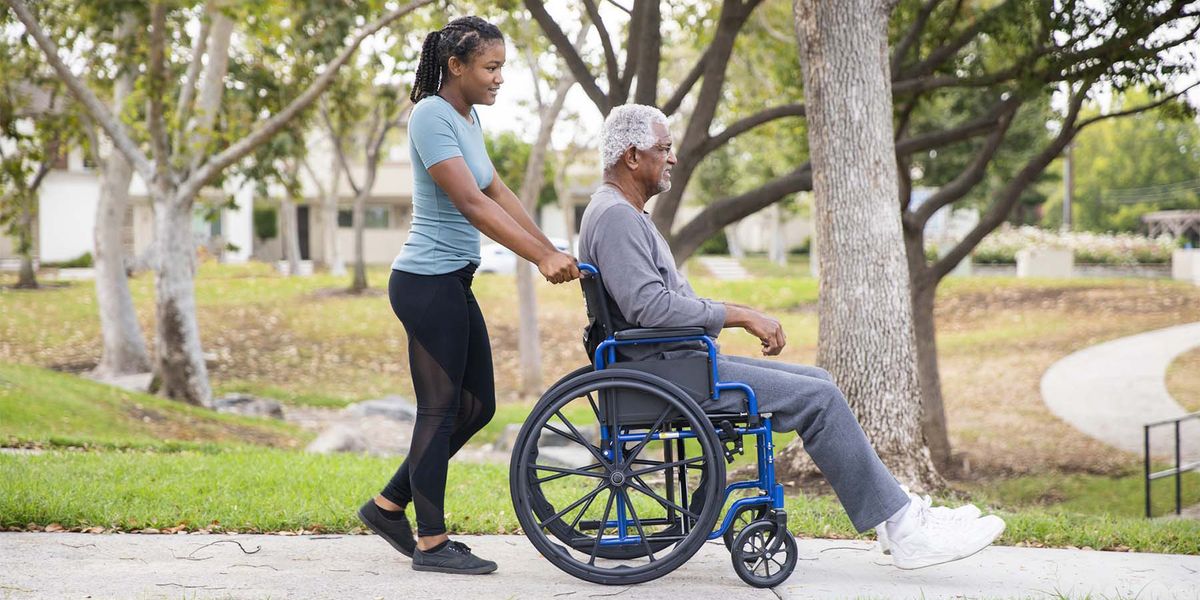
Mitigating Losses Incurred by Vulnerable Populations During Wildfires
Fire departments can help communities fare better and recover faster from wildfire by preplanning how to assist at-risk populations before a wildfire.
Posted: Oct. 28, 2022
- 2 min read
- Find similar articles:
- Planning
- Wildfire and WUI
Vulnerable populations disproportionally incur the greatest losses during natural disasters1. The effectiveness of a community's plan to mitigate for and respond to wildfires can depend on its attentiveness to members of its vulnerable populations.
The Camp Fire in Northern California was an example of a wildfire that resulted in terrible loss of life by members of vulnerable populations. Of those who perished, most were 60 or over and many had limited mobility that required assistive devices such as walkers, wheelchairs and medical oxygen. In addition, a 39-year-old died because he did not have a car to use for evacuation.
Who are members of vulnerable populations, and how can emergency service providers help them be better prepared for a wildfire or other natural or human-made disaster?
Defining vulnerability during natural disasters is complicated. The United Nations University has done some research on populations that disproportionally suffer during natural disasters.2 This study considers risk factors such as exposure, susceptibility, coping capacities and adaptive capacities.3
The U.S. Census Bureau looks at other factors to determine vulnerability, including health (conditions that limit mobility and lack of caregiver), income (low-income household), age (65 or older and children), communication barriers, employment status, and others.
Vulnerable populations and needs to consider in wildfire planning documents (this is not an all-inclusive list):
- Children.
- Ages 65 or older.
- Limited mobility and lack of caregiver.
- Health conditions, such as heart and breathing difficulties.
- Mental health limitations.
- Low-income and under-employed residents.
- Lack of access to transportation.
- Living conditions.
- Single-parent households.
- Those whose first language is not English.
- Limited access to resources, including access to the internet and more.
The demographic makeup of communities can change with time. This can impact disaster outcome, so it is important that planning efforts are ongoing and planning documents are updated frequently to reflect changes in the community.
Incorporating resources and evacuation efforts needed to assist a community before a disaster occurs should be included in disaster preplanning documents like hazard mitigation plans, Community Wildfire Protection Plans and other wildfire preplanning tools.
Tools and resources are available to assist fire departments in understanding the demographic makeup of their community.
- The U.S. Census Bureau's Community Resilience Estimate is a tool that measures a community's resiliency (its ability to endure a natural disaster incurring less loss and with quicker recovery).
- The Federal Emergency Management Agency (FEMA) provides an online National Risk Index mapping tool that looks at the social vulnerability of residents to loss during a disaster. The wildfire risk mapping tool integrates data from the US Forest Service's FSim Burn Probability and Index Level. Another tool FEMA offers is the Resilience Analysis and Planning Tool. This tool offers 100 preloaded data layers including information about broadband internet availability.
- Vision 20/20's Discovery Data Hub includes links to obtain information on community demographics, fire incidents and more. Also, check out their Community Risk Assessment Guide.
- CityData.com, a free online resource utilized by real estate professionals, incorporates data about the demographics of communities across the United States from government and private sources and even has an interactive mapping tool you can use.
